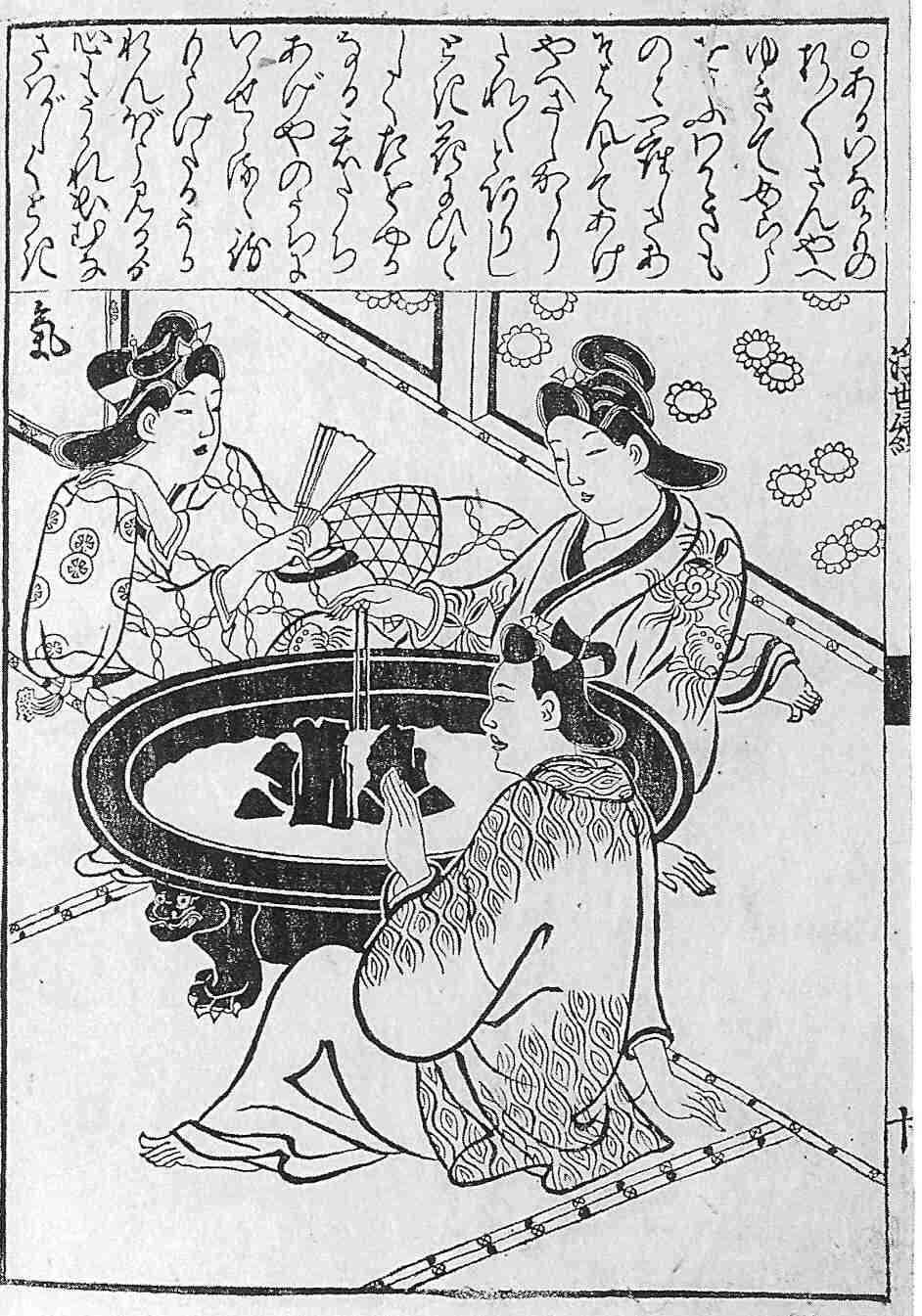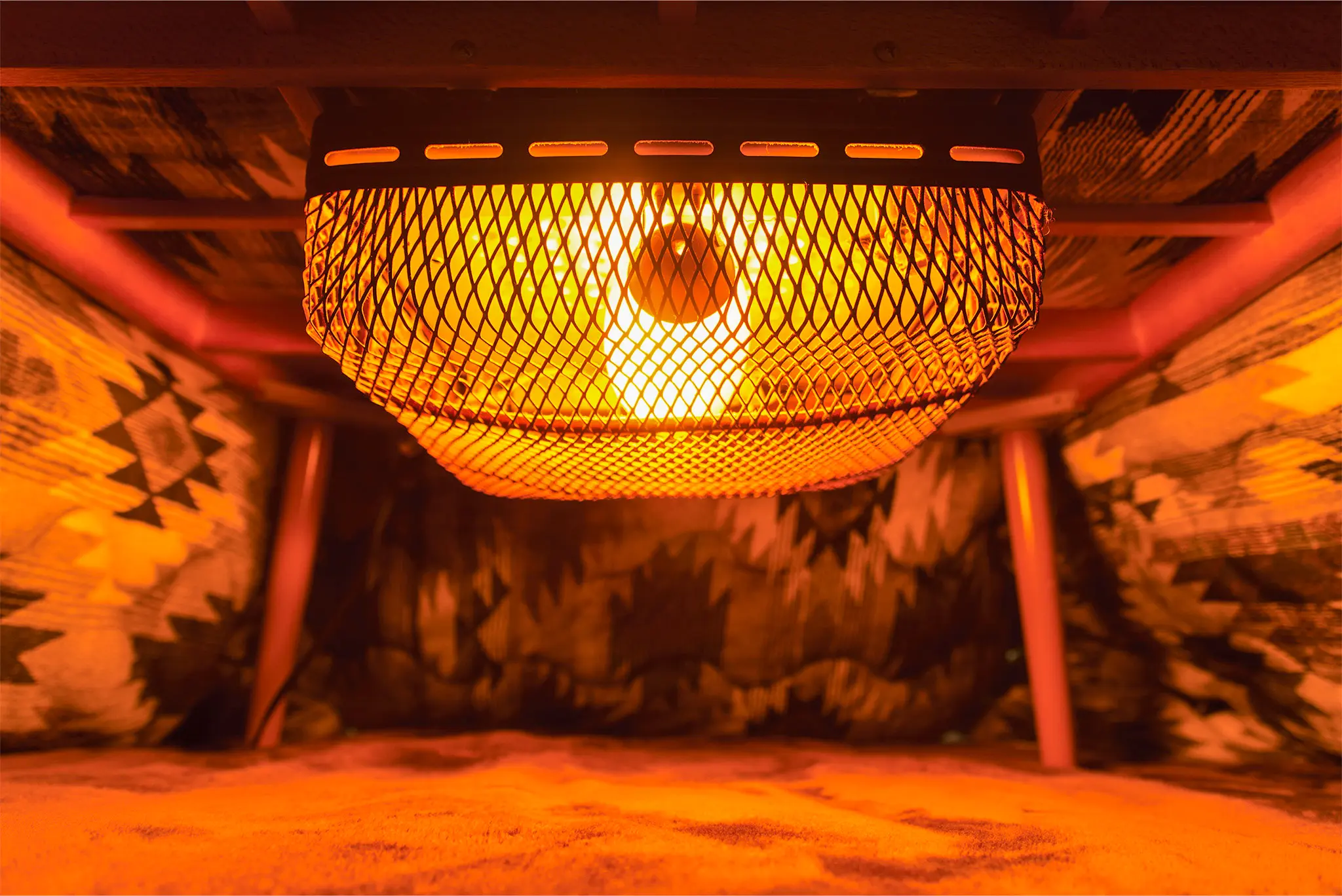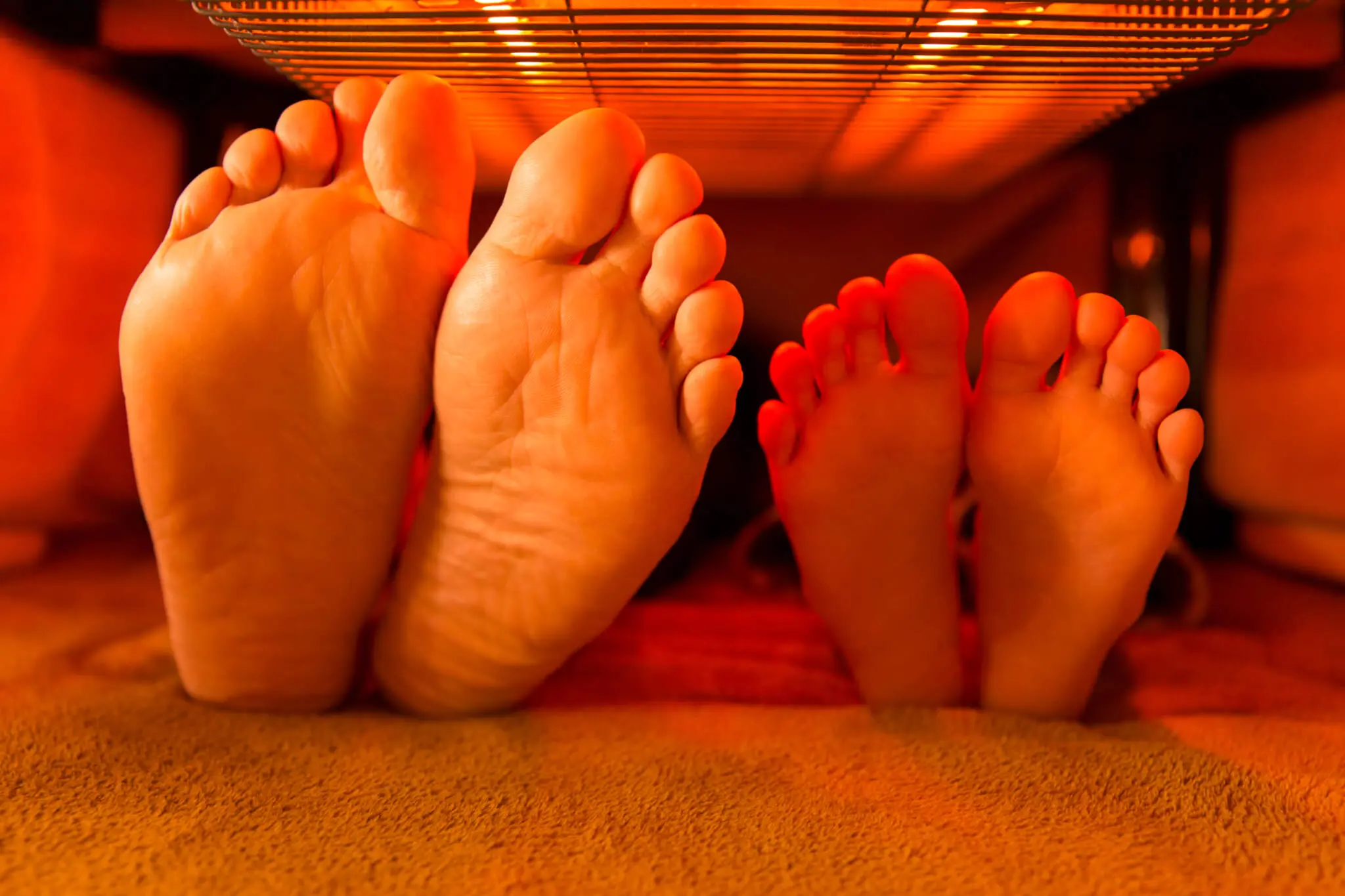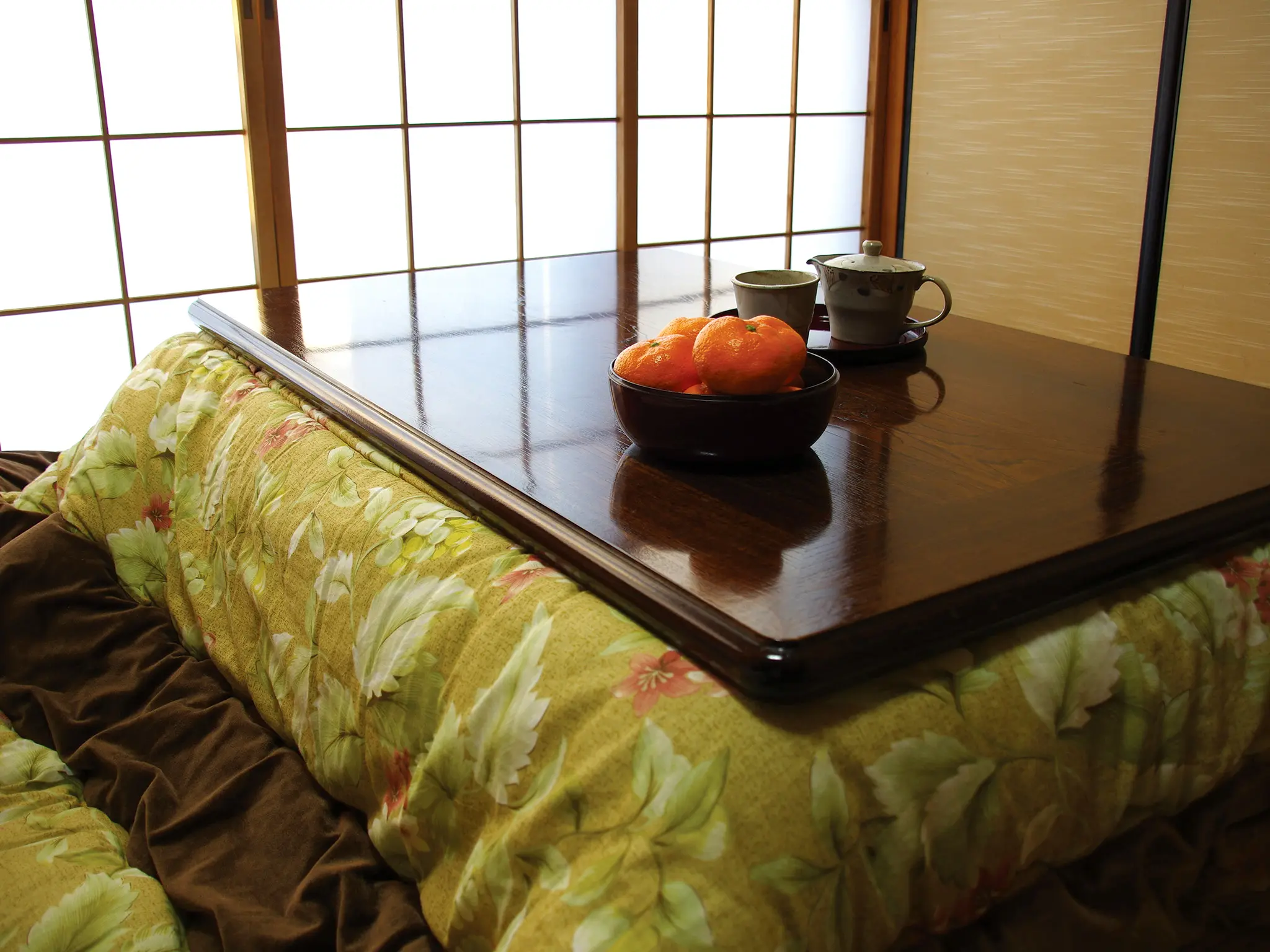
What is a Kotatsu Table?
First things first, you’ll want to know what a kotatsu actually is. Simply put, it’s a type of home heater — a low table with a heater underneath it that is covered by a blanket, designed to warm up your legs as you sit around it. With the advent of central heating and air conditioning, they aren’t as common as they once were, but ask any Japanese person about a kotatsu and they’ll likely light up. The heat from a kotatsu is a special kind, it doesn’t dry out the room like air conditioning does, and in a culture which shies away from excessive physical contact, it’s an excuse to snuggle up close with friends and family.
There are two types of kotatsu: the oki-gotatsu and the hori-gotatsu. The former is portable, home-style heater and the latter more robust.
To enjoy the kotatsu, simply lift up the blanket (kotatsu-buton) and put your legs under it, next to the heater. Then the blanket goes back on top, like a duvet. While in the kotatsu, you can eat food, drink tea, or do anything you’d normally do around a table with others: card games to pass the winter nights, watching TV, drinking hot chocolate or matcha — you name it. Some kotatsu come without a blanket, but still boast a communal aspect of legs in and warm up!

History of the Kotatsu
The kotatsu first came to be around 700 years ago in the Japanese Muromachi period (1336-1573). Its origins can be traced back to the Japanese innovation of the irori, a sunken fire pit in the middle of the dining room that families would gather around during winter. At some point, they began draping clothes above the irori, which eventually evolved to special blankets and they’d stick their feet underneath for a bloom of warmth.
Come the Edo period, kotatsu saw a significant advancement: The sides of the irori were dug out and around, forming what can be considered the original hori-gotatsu, hori meaning “dig.” Paintings and uki-e from the Edo period depict aristocracy snuggled under their own kotatsu, complete with blankets.
Sometime towards the end of the Edo period, as tatami became more common in homes across Japan, the irori fire changed to a hibachi, a ceramic charcoal pot. This gave the kotatsu concept feet. In other words, it became portable, just like Ariel being given human legs. The kotatsu structure could now be transported and moved around the home. In cold Japanese homes, this was a godsend.
Fast forward to the 1950s Showa period (1926-1989), when the charcoal hibachi arrangement was usurped as electric kotatsu appeared. Simply put, having a charcoal heater underneath your table was not as safe as one may expect. Electric kotatsu also have the undeniable advantage of temperature control.
Nowadays, a quick search on Japanese e-seller sites reveals a wealth of kotatsu-related advancements, including “wearable kotatsu” and even kotatsu overalls.

Types of Kotatsu
Let’s have a look at the different types of kotatsu you’ll come across in modern-day Japan.
Oki-gotatsu
Essentially, an oki-gotatsu is a heated, blanketed table. The heated electronic element is affixed to the underside of the table, above which is a blanket which goes over and around, down to the floor. On top of the blanket is the table surface.
Hori-gotatsu
The hori-gotatsu is found in traditional Japanese restaurants, like izakaya and even sushi places. While the oki-gotatsu is portable, the hori-gotatsu is sunken, and doesn’t always have a leg cover. The hori-gotatsu table is on the same level as the floor, with a space underneath for people to put their legs. You can climb into the hori-gotatsu, and it’s thought to be better for the posture.
During the winter, restaurants and eateries with hori-gotatsu are unsurprisingly popular.
Benefits of Kotatsu
Kotatsu has many benefits.
Energy Efficient
Rather than heating an entire room, the kotatsu draws its audience in, around a tiny area of heat. Compared to air conditioning, which blasts hot air out into the whole room, adjusting more or less in regard to temperature fluctuations, the kotatsu does not pump out more energy in response to its environment.
Price
In addition to being more energy efficient, kotatsu are less than half the price of air conditioning.
Comfort
Unless you’ve bizarrely invested in a single-person kotatsu, this device gives you an excuse to invite a whole table’s worth of people over to grab a bite to eat or a drink. “Hey, come over for kotatsu and chill” can be your new motto.

Are Kotatsu Dangerous?
The simple answer is no. As long as you don’t fall asleep under them, that is — one of Tokyo Weekender’s editors fell asleep under his kotatsu and awoke with minor burns. It goes without saying that children, pets and babies (and TW staff) must be supervised when using the kotatsu. Unlike adults, they aren’t aware of their own body heat, and may fall asleep under the appliance.
Otherwise, the kotatsu is perfectly safe to use. It hasn’t enough direct heat to burn when you touch it directly.
Where and When to Find Kotatsu Tables
If you’re in Japan, kotatsu are very common, both at restaurants, often as hori-gotatsu, and at family homes as oki-gotatsu. As soon as there is a nip in the air, you bet that families and restaurants everywhere are firing up the old heater. Some Japanese inns also come with their own kotatsu rooms. If you fancy your own, have a look at Don Quijote, electric shops and online.
For people outside Japan, have a look in larger electric stores or on specialist websites.









